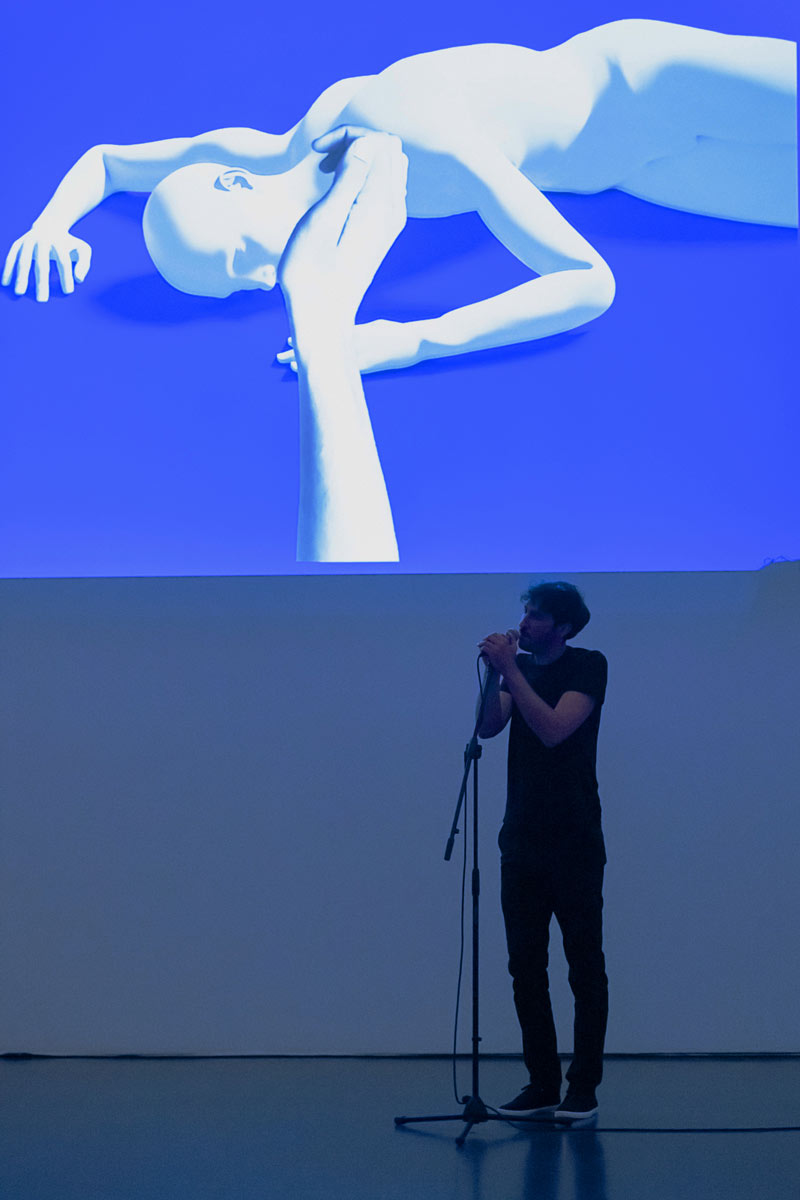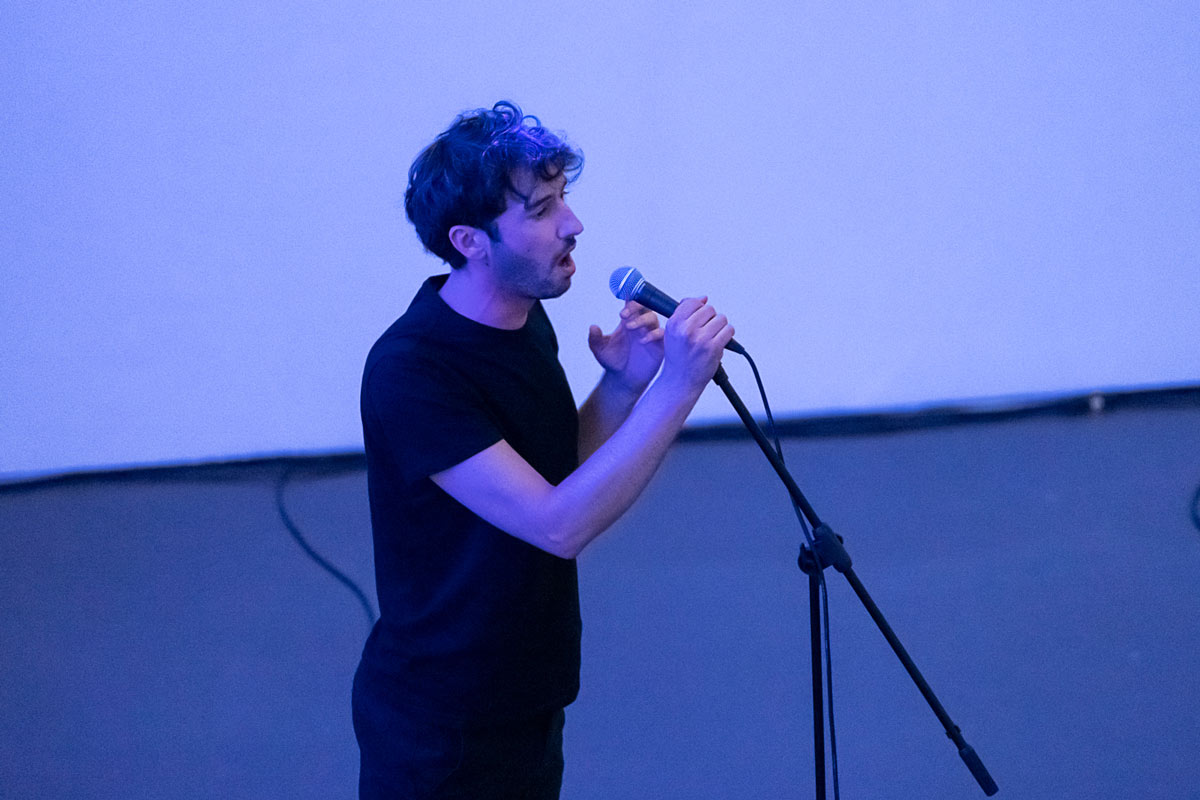
NEON GREY
When we hear a voice, we evoke an image of the person speaking/singing. We associate assumed characteristics such as age, gender, body size and condition, and even emotional state. A determining role in the attribution of gender categories is played by the pitch of the voice. When the falsetto voice appeared in the Baroque era, a voice colour that was located in the soprano or alto range, i.e. a "female" pitch that was, however, sung by men or boys and castrati, this led to irritation.
In the 20th century, composers, but also pop musicians, began to rediscover the falsetto voice. Falsetto singing is often used to create androgynous figures and thus traces the questions of gender and identity concepts.
In the vocal performance 'neon grey' Dominik Geis creates a kind of "androgynous" character with his voice, the use of falsetto singing and by the animation of 3D figures. The question of identity is raised. Carried by poppy sound collages, synthesizer sounds and framed by a video, the voice resounds; and an atmospheric interplay of sound and sound image emerges, which brings the shades of grey between andro and gyne to vibrate in a somewhat melancholic way.
Video vocal performance, 16:9, 2 microphones, sound, 25:00 min. 2021




NEON GREY
Video vocal performance, 16:9, 2 microphones, sound, 25:00 min.,
2021